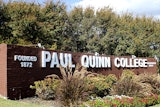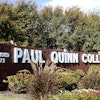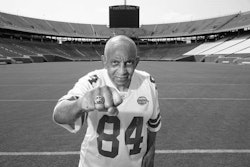There’s a memory burned into Walter Harrison’s brain. Harrison, the co-chair of the NCAA’s Committee on Academic Progress, recalled a 2003 meeting to hammer out details on the NCAA’s latest academic reform effort. The late Clinton Bristow Jr., then president of Alcorn State University, said something to Harrison that has stayed with him.
“He looked across the table and said, ‘I hope you’re not getting into this to ensnare HBCUs,’” said Harrison, president of the University of Hartford. “I said, ‘Of course not. That’s not my intention at all.’ I have carried that pledge ever since.”
Despite Harrison’s pledge, the NCAA’s comprehensive academic reform measure, the Academic Progress Rate (APR), has—over its six-year existence—consistently meted out penalties to HBCUs at a disproportionate rate for Division I institutions, especially when compared to the elite members of the Bowl Championship Series (BCS). This year was no different.
According to data from the NCAA, eight of the 20 schools facing reductions in scholarships, practice time, or both are HBCUs, while none are BCS schools. While no HBCUs faced a post-season ban this year, and the APR showed improvement for all Division I schools, Harrison said there’s clear evidence that problems persist.
Among Division I institutions facing penalties, 14 HBCUs out of 80 schools, or 17.5 percent, were affected in 2009-10. In previous years, 14 out of 107, or 13.1 percent, penalized schools in 2008-09 were HBCUs and 10 out of 106, or 9.4 percent, penalized institutions were HBCUs in 2007-08. Among the 335 institutions counted as Division I institutions in 2009-10, 22, or 6.6 percent, are HBCUs, according to NCAA data.
Low-resource Institutions
Introduced in 2004 as a real-time measure of academic performance, the Academic Progress Rate (APR) is a mathematical calculation based on eligibility and retention of scholarship student-athletes. Any team that scores below 925 (out of a possible 1,000) is subject to penalties, ranging from public notice to bans on post-season play.
But there are colleges that the NCAA calls “low-resource institutions” that face problems because they simply do not have the funds to provide the same level of academic support that schools with larger budgets do. These “low-resource institutions” are defined as colleges and universities whose athletic departments spend in the bottom 10 percent per capita on their student-athletes and have high Pell Grant eligibility. The NCAA has provided these schools some relief from penalties and offered supplemental funding for academic support. But these are short-term measures that do little to address the larger issue of financial inequity.
“It’s pretty clear to us that schools that have more money to spend on academic support do so and are more successful,” Harrison said. “So it’s not that HBCUs are choosing not to spend money on academic support; they just don’t have it.”
The idea that low-resource institutions, including HBCUs, may be disproportionately impacted by APR isn’t that far-fetched, says Christine Jackson, past-president of the National Association of Academic Advisors for Athletics (N4A). As colleges and universities figure out how to allocate their resources effectively, it’s important to understand that schools with larger budgets may have more funding to aid academic support. But athletic departments should also encourage student-athletes to take advantage of support systems that already exist on campus, she says.
The key is spending money in the right place, and for Jackson, who is director of football student-athlete development at the University of Louisville, the major investment should be in hiring people to meet the needs of the student-athletes. “I could see how, if you’re only one person, I can’t see that working as well as if you have four people,” says Jackson, who was a consultant for Alabama State University last year. “You’ve got to have quality personnel to meet the needs of those students.”
Jackson says that N4A does APR consulting and hosts workshops to help their membership better understand and negotiate academic progress. The association recently held a workshop for the Mid-Eastern Athletic Conference (MEAC), a college athletics conference made up of mid-Atlantic and southeastern U.S.-based historically Black institutions.
There’s a larger issue at work when it comes to HBCUs, according to Dr. Marybeth Gasman, an associate professor at the University of Pennsylvania’s Graduate School of Education. Gasman, who researches HBCUs, diversity, and higher education and philanthropy, said it will take radical change to bring about equity in the funding of colleges and college sports because the inequity so rooted in history often gets lost.
Gasman, who holds a doctorate in higher education and law from Indiana University, said HBCUS were never created to be equal to their White counterparts, despite start-up donations from White philanthropists. Those donations did not come close to matching given at traditionally White institutions. That early giving forms the foundation for many endowments, which have grown at astounding rates for some colleges and universities over the years. As a result, there’s a long history of unequal philanthropic giving and unequal state appropriations that is difficult to overcome.
“If you have a budget that’s really stretched, you’re not going to have as much money for academic support,” Gasman said.
Negotiating Academic Progress
Lack of resources for academic support is the cause for lament at those schools that have faced penalties as a result of APRs that failed to make the grade. Keith Davidson, director of athletics at the University of Maryland, Eastern Shore (UMES) said that the fundamental purpose of the APR—to see student athletes graduate from college—is extremely important, but difficult, nonetheless.
Davidson said that, while they haven’t had a significant number of problems (the university was put on public notice for baseball and lost just over half a scholarship this year), what hurts UMES the most is when a student transfers, not because he or she did not have their scholarship renewed but for a host of other reasons—financial, homesickness or even family obligations. The rules that are applied to schools like UMES often amount to an unfair “one-size-fits-all system” put together by the NCAA because athletic department budgets at many low-resource institutions are sometimes the equivalent of the academic support budgets at BCS schools.
“That’s a large disparity, but we’ll both be held accountable in front of the media,” said Davidson, who has been in charge of the athletic department at UMES since 2006.
Davidson said the APR often involves a skilled negotiation that can involve “mind-reading” to determine just how hard recruits are willing to work based on their character, GPA and SAT scores.
“I think the APR is here to stay; the things I have problems with, the NCAA can address,” Davidson said. “I don’t fault the NCAA for doing this. We have to not compromise our conviction but be flexible in our approach. It’s a Catch-22.”
Later this summer, the NCAA Committee on Academic Performance will conduct an extensive review of the APR program to assess the structure of the penalties, filters and Academic Progress Rate benchmarks.


















